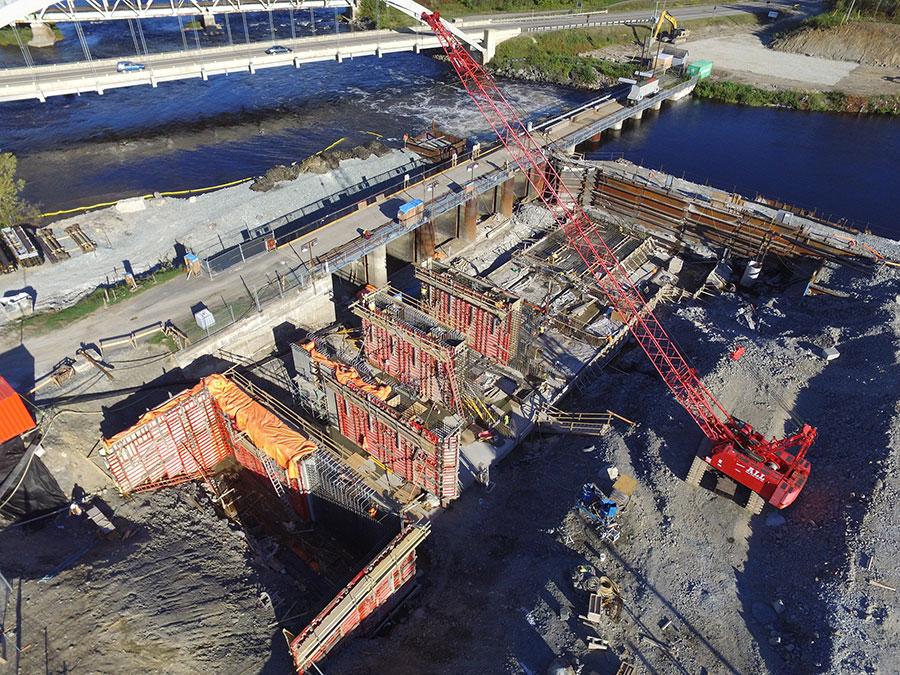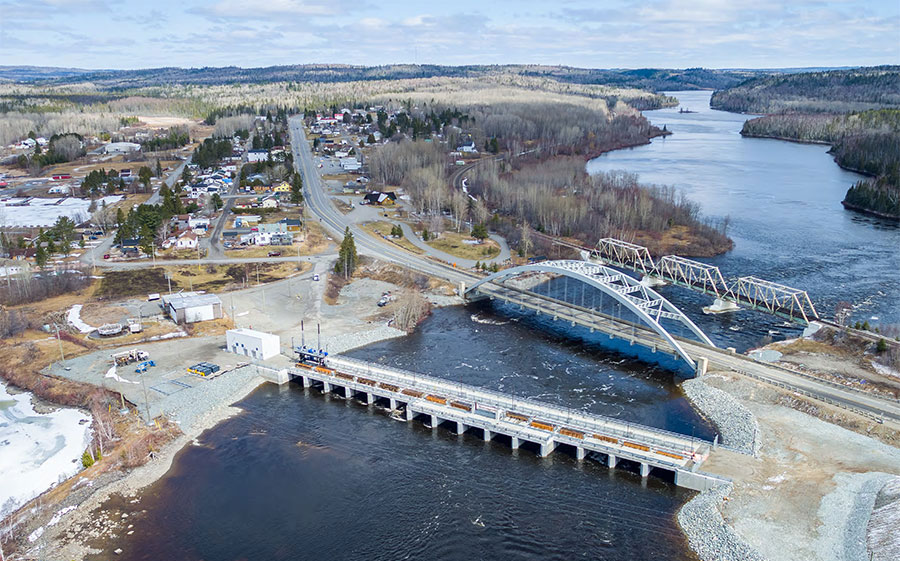Latchford Dam replacement project
From: Public Services and Procurement Canada
The Latchford Dam, built in 1913, sits on the Montreal River in Latchford, Ontario, about 130 kilometres north of North Bay. It controls the water level of Bay Lake with 11 sluiceways, 10 piers and 2 abutments. Find out about the new Latchford Dam built to replace the old dam.
On this page
- Project overview
- Project description
- Key milestones
- Project background
- Latest news about this project
- Related links
- More information
Project overview
- Location
- Latchford, Ontario
Locate the Latchford Dam on a map - Type of project
- Replacement of the Latchford Dam
- Lead department
- Public Services and Procurement Canada
- Construction firms
- Dessau Inc., now Stantec, and Hydrosys Experts-Conseils Inc. (engineering design contract) Construction Demathieu & Bard Inc. (construction contract)
- Value
- $34.1 million
- Project status
- Completed in June 2017
Project description
A new dam was built adjacent to the old Latchford Dam, and then the old dam was removed. The new dam, following the Canadian Dam Association’s Dam Safety Guidelines, has:
- 14 gates equipped with stoplogs to control water levels
- 1 mechanical gate for more precise water control
- a public multi-purpose passage on the dam that includes fishing areas and allows all-terrain vehicles and snowmobiles to cross from one side of the river to the other
- access and parking areas on both the north and south banks
This construction project began in 2012 and was completed in June 2017.
Key milestones
- 2012: An engineering design contract was awarded to Dessau Inc., now Santec, and Hydrosys Experts-Conseils Inc.
- 2014: A contract was awarded to Construction Demathieu & Bard Inc. of Saint-Jérôme, Quebec, for the replacement of the dam
- 2015: The contractor built the the first half of the new dam on the north shore and demolished and removed the old section of the dam
- 2016: The second half of new dam was completed and the remainder of the existing dam was removed
- December 2016: The project was substantially completed and the dam was commissionned
- June 2017: The project area was restored
Project background
Find out more about the techniques and methods used for the Latchford Dam replacement project.
Building 2 cofferdams
A cofferdam is a watertight enclosure from which water is pumped to expose the bottom of a body of water and permit construction.
The contractor began construction of the upstream and downstream cofferdams simultaneously in June 2016. Fisheries and Oceans Canada gave their approval to start the downstream cofferdam work at that time.

Cofferdam for the construction of the new Latchford Dam, close-up aeriel view (Click to view enlarged image.)
Removing water from 2 cofferdams at once
After the cofferdams were built, the contractor removed the water from the upstream cofferdam at the same time as it removed the water from the downstream cofferdam.
Advantages
Pumping water out of both cofferdams at the same time has many advantages, it:
- makes the work environment safer
- produces less turbid (muddy or cloudy) water
- reduces pumping time
- makes it easier to manage the turbid water
- reduces disturbance to residents
- allowed the cofferdams to be removed earlier than planned
Environmental considerations
Before the project, we conducted an environmental effect evaluation.
Fish spawning
The natural spawning area and new spawning area for fish are on the north side of the river. The construction took place on the south side of the river and did not affect the spawning area.
Minimizing environmental impacts
The project’s impact on the environment was minimized by:
- installing turbidity curtains to prevent sediment from entering the Montreal River
- using vacuum trucks to remove turbid water from the construction site
- engaging qualified environmental specialists to monitor activities at the site
- keeping a biologist present when the contractor removed the water from the cofferdams
